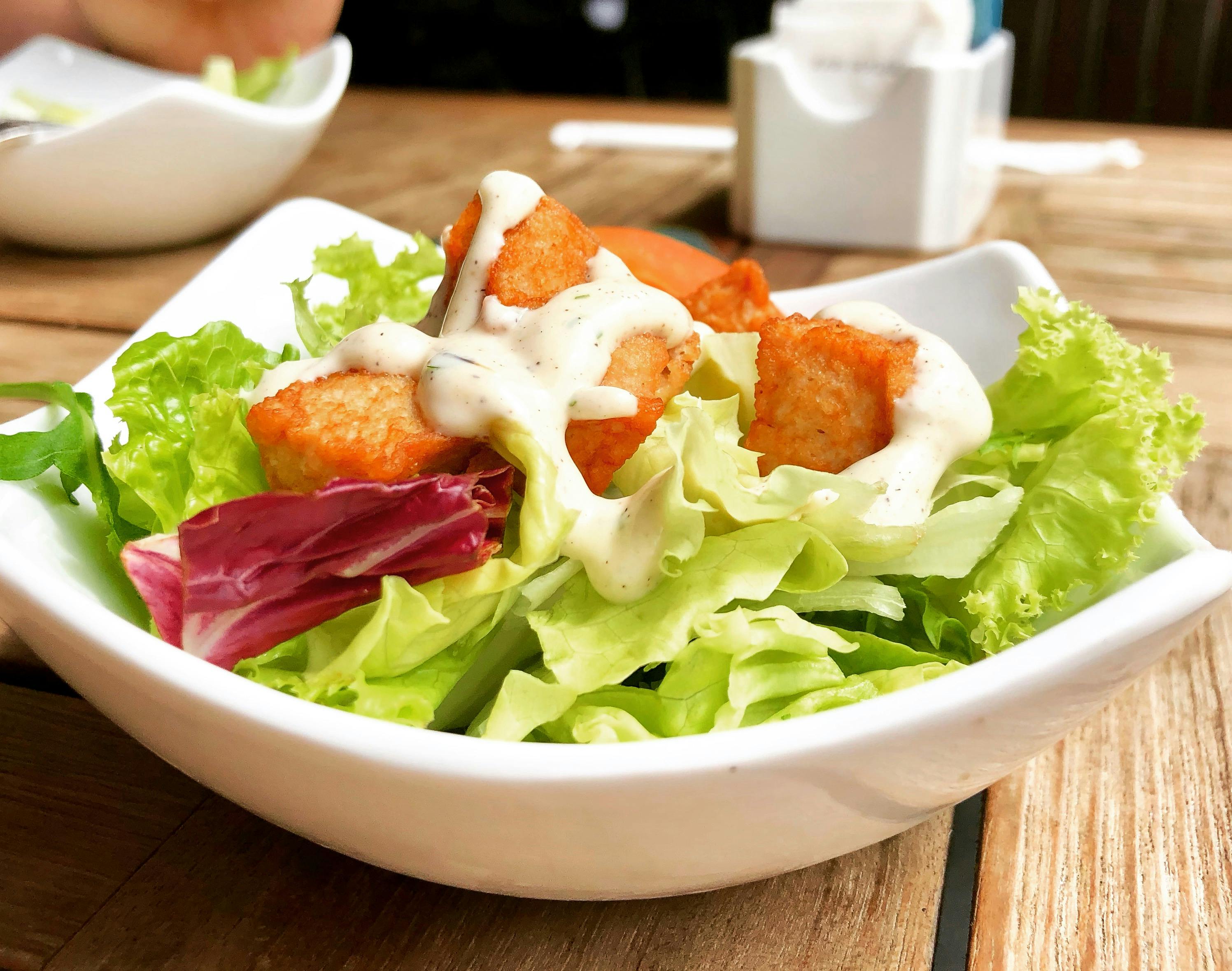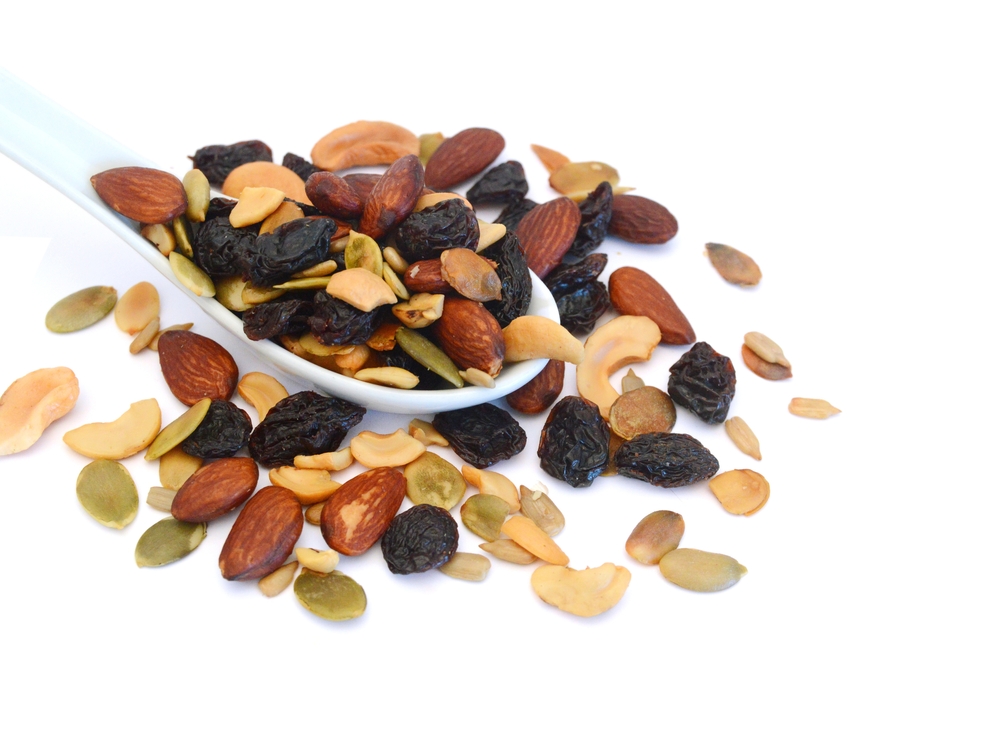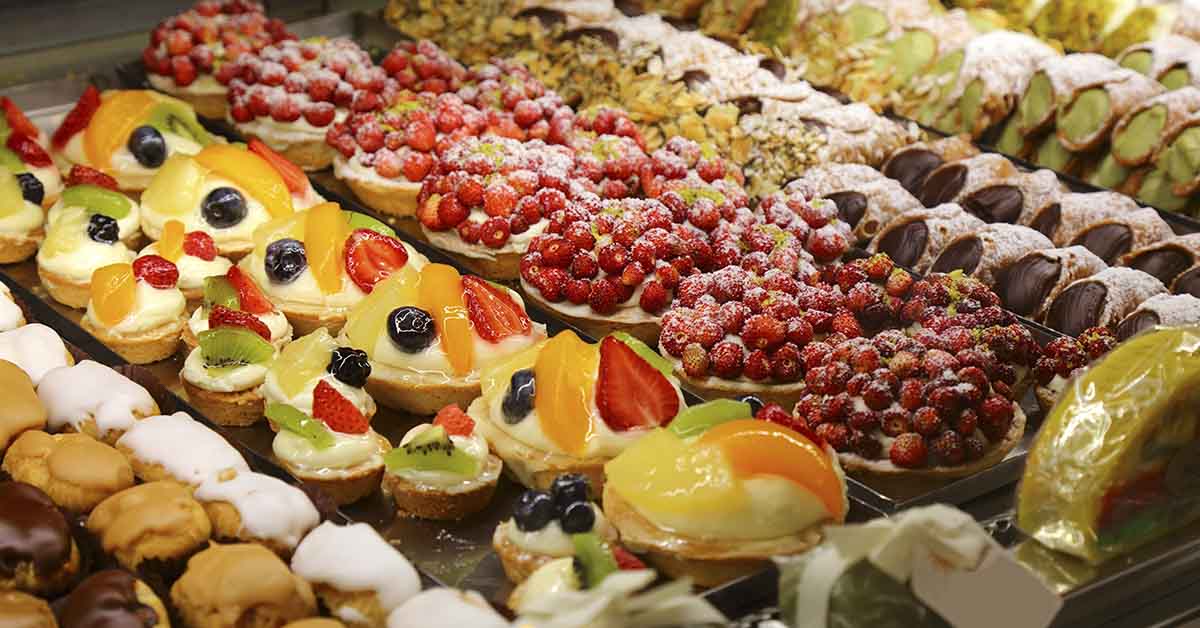Not all high-calorie food is bad for you. What really matters is the quality of those calories. Some foods are full of sugar or unhealthy fat, while others give your body real fuel. A slice of cake and a spoonful of peanut butter might have the same calories, but they don’t do the same thing for your health. Many people focus only on the numbers and forget to check the nutrients inside. Calories from whole, nourishing foods can keep you full and energized. But empty calories often leave you feeling tired or hungry soon after. So instead of fearing calories, let’s talk about which ones to avoid and which ones are actually worth eating.
1. Processed Meats

Processed meats like hot dogs, bacon, and deli slices are quick to prepare, but they come with problems. They’re usually full of sodium, saturated fat, and chemical preservatives. Over time, eating them often can raise your risk of heart issues and even certain cancers. Even though the calorie count might not seem outrageous, it’s the quality that makes them harmful. These meats also lack fiber and key nutrients your body actually needs. If you enjoy them, try keeping your portion small and not eating them daily. Look for fresh, lean proteins instead, like grilled chicken or beans. Even though you might love the smell of bacon, or the taste, removing this from your diet can help your health in a big way.
2. Candy Bars

Candy bars are tasty, but they pack a lot of calories into just a few bites. Most bars have around 250 to 300 calories, and they come mostly from sugar and fat. The stuffed “Dubai chocolate” are packed with up to 5x the calories of a regular candy bar too! Sure, they give you a quick burst of energy, but that sugar rush doesn’t last. You’ll probably feel hungrier afterward than before you ate it. Some also contain extra oils and artificial flavors your body doesn’t need. If you’re craving chocolate, a few squares of dark chocolate with 70% cocoa is a smarter choice. It satisfies the craving and offers antioxidants too. Candy isn’t evil, but it’s better saved for once in a while.
3. Fried Foods

Fried foods are crispy and comforting, but they come with extra baggage. Deep-frying adds loads of oil, which pushes the calorie count way up. Even small portions like nuggets, calamari, or onion rings can be heavy on your system. These foods also often contain trans fats that raise bad cholesterol. Plus, they don’t provide much in the way of vitamins or fiber. If you still want that crunch, try baking or air frying instead. You can still enjoy your favorites with way less grease. It’s a simple switch that your body will appreciate.
4. Baked Goods and Pastries

Pastries like muffins, croissants, and donuts are tempting, especially in the morning. But they’re usually packed with sugar, refined flour, and fat. These treats digest quickly and leave you wanting more to eat later. Some versions even have more calories than a full meal but none of the nutrients. They’re also easy to overeat since they feel light but are calorie-dense. Even low-fat versions often add more sugar to make up for lost flavor. If you want something sweet, try fruit with nut butter or plain yogurt with honey. You’ll still get that sweetness without the energy crash.
5. Sugary Drinks

Sodas, sweet teas, and fancy coffee drinks are full of sugar and empty calories. A single can of soda can have over 150 calories, and none of them will fill you up. These drinks cause a spike in your blood sugar, followed by a crash that leaves you tired and craving more. Many people don’t even realize how many calories they’re drinking each day. Replacing these with sparkling water, black coffee, or herbal tea makes a big difference. Even water with fresh fruit slices adds flavor without all the sugar. It’s an easy change that helps with energy, digestion, and even skin. Don’t let your drinks work against you.
6. Ice Cream

Ice cream is delicious, but it’s one of the sneakiest calorie bombs out there. Just one cup can pack over 300 calories, and that’s before you add toppings. It’s full of sugar and saturated fat, which don’t do your body any favors. Because it melts fast and tastes amazing, it’s easy to keep going long after you meant to stop. Most store-bought ice cream also includes added gums and artificial flavors. If you’re craving something cold and sweet, frozen banana blended with a splash of milk is a good option. Greek yogurt with honey and berries works too. You still get a sweet treat without loading up on empty calories.
7. Restaurant Pasta Dishes

Many pasta dishes at restaurants are huge and covered in heavy sauces. Cream-based or cheesy options often push the meal over 1,000 calories. The pasta is usually refined, which means you’re not getting much fiber or nutrition from it. Pair it with bread and a sugary drink, and you’re looking at more than a day’s worth of calories. These meals also tend to be high in sodium, which can leave you bloated and thirsty. Making pasta at home lets you keep things lighter and more balanced. Olive oil, garlic, and fresh vegetables make a tasty sauce without going overboard. When you control the ingredients, you get more flavor and fewer regrets.
8. Granola

Granola has a health halo, but a lot of it is more sugar than substance. Many store-bought options are toasted in oil and packed with sweeteners. One cup can easily reach 400 or more calories before you even add yogurt or milk. People often pour more than the recommended serving without realizing how fast it adds up. Some brands are better than others, but labels can be tricky. Look for granola with whole oats, no added sugar, and a short list of ingredients. Or make a batch at home using nuts, seeds, and a bit of honey. You’ll end up with something that actually supports your health.
9. Creamy Salad Dressings

Salads are only healthy if you watch what goes on top. Thick dressings like ranch and Caesar often contain over 150 calories in just two tablespoons. Most people pour more than that without thinking twice. These dressings are usually made with oils, cream, and lots of salt, which turns your salad into a heavier meal than expected. Even low-fat versions often contain more sugar or preservatives to make up for the flavor. A simple mix of olive oil, lemon juice, and herbs tastes fresh and keeps things light. You still get bold flavor without drowning your greens. Making the switch takes no time at all.
10. Flavored Coffees

Some coffee drinks have more in common with milkshakes than actual coffee. A large caramel latte or blended drink often hits 400 to 500 calories thanks to syrups, whipped cream, and sugary milk. These calories don’t satisfy hunger and often lead to energy crashes later in the day. It’s easy to forget how much sugar is hiding in that daily caffeine fix. If you love coffee, try scaling back to black coffee, or just add a splash of milk and cinnamon. You still get that warm, cozy flavor without all the extras. Cutting back on sweet coffee drinks is a simple way to lower your daily sugar and calorie intake. Your energy and focus will thank you.
Not All High-Calorie Foods Are Bad

Now that we’ve covered the high-calorie foods worth limiting, it’s time to flip the script. Some high-calorie foods actually fuel your body in the best way! They’re full of nutrients, healthy fats, protein, or fiber; all things that help you stay full and energized. Calories aren’t the enemy when they come from quality ingredients. In fact, eating enough of the right foods can boost your metabolism, balance your mood, and support your overall health. You don’t have to fear every high number on a nutrition label. What matters is where those calories come from and how they work in your body. Let’s look at ten high-calorie foods that are genuinely good for you.
1. Nut Butters

Nut butters like almond, peanut, and cashew are high in calories, but they’re packed with nutrients your body needs. Each tablespoon usually has around 90 to 100 calories, mostly from healthy fats and protein. These fats support your heart and help you feel full longer. Nut butters also contain fiber, vitamin E, magnesium, and antioxidants. They’re great spread on toast, stirred into oatmeal, or added to smoothies. The key is to stick with natural versions that don’t have added sugar or hydrogenated oils. Just a spoonful or two goes a long way. When used in moderation, nut butters are a solid, satisfying snack.
2. Avocados

Avocados are rich, creamy, and full of heart-healthy fats. They’re higher in calories than most fruits, with around 250 in a whole avocado. But those calories come from monounsaturated fats that help manage cholesterol. Avocados also contain potassium, fiber, and vitamins like C, K, and B6. They keep you full and help your body absorb nutrients from other foods. Mash them on toast, slice them into salads, or blend them into smoothies. You don’t need a lot to get the benefits. A few slices can turn a basic meal into something much more satisfying.
3. Whole Eggs

Eggs used to get a bad rap, but they’re actually a great high-calorie food packed with nutrition. One large egg has about 70 calories and offers high-quality protein, healthy fats, and important vitamins. The yolk contains choline, which supports brain health, along with vitamin D and antioxidants like lutein. Eating whole eggs helps with muscle repair and keeps you full longer. They’re incredibly versatile too – you can boil, scramble, poach, or bake them. Pair them with veggies for a well-balanced breakfast or snack. Don’t skip the yolk, that’s where most of the good stuff lives.
4. Olive Oil

Olive oil is calorie-dense, with about 120 calories per tablespoon, but it delivers real health benefits. It’s full of monounsaturated fats that support heart health and reduce inflammation. You’ll also get antioxidants and a mild boost of vitamin E. Drizzling it on salads or roasted veggies adds flavor and satiety. It’s also great for cooking at moderate heat without breaking down into harmful compounds. Extra virgin olive oil is the best choice since it’s less processed. A little goes a long way, so you don’t need to use much. It’s a simple way to make your meals both healthier and tastier.
5. Salmon

Salmon is one of the best high-calorie foods you can eat. A 6-ounce fillet has around 350 calories, but it’s packed with protein and omega-3 fatty acids. These healthy fats support brain function and reduce inflammation in the body. Salmon also provides B vitamins, potassium, and selenium. It keeps you full, supports muscle repair, and promotes heart health. Grilled, baked, or pan-seared salmon works well in salads, bowls, or just on its own. Aim to eat it a couple times a week if you can. It’s a calorie-dense food that actually does your body good.
6. Full-Fat Greek Yogurt

Full-fat Greek yogurt is creamy, satisfying, and loaded with nutrients. One cup can have up to 200 calories, making it much richer than regular yogurt. Those calories come with protein, probiotics, calcium, and healthy fats. It’s great for digestion and helps you feel full for longer. Unlike sugary yogurts, this one actually works to fuel your body. You can top it with berries, nuts, or a drizzle of honey for a balanced snack or breakfast. Always check the label to avoid added sugar and unnecessary thickeners. It’s simple, versatile, and fills you up without making you feel heavy.
7. Dark Chocolate

Dark chocolate offers more than just a sweet bite. A one-ounce square usually contains about 170 calories, but it also delivers fiber, iron, and antioxidants. Cocoa-rich varieties can support heart health and even boost your mood. The key is choosing bars that are 70% cocoa or higher. Lower cocoa levels mean more sugar and fewer benefits. A small square or two can satisfy a sweet craving without sending your blood sugar on a rollercoaster. Keep it as a mindful treat instead of a daily habit. When you want something indulgent and smart, dark chocolate is a strong choice.
8. Trail Mix

Trail mix is calorie-dense, but when made right, it’s one of the most balanced snacks you can grab. A handful may have 200 calories or more, mostly from nuts, seeds, and dried fruit. That combo gives you protein, fiber, and healthy fats all in one. Pre-packaged versions often add candy or salt, so making your own at home is a smarter option. Use raw or lightly roasted nuts, sunflower seeds, and unsweetened dried fruit. It’s perfect for travel, work, or post-workout fuel. A small portion goes a long way, keeping you full without weighing you down. Just avoid turning the bag into a bottomless snack.
9. Sweet Potatoes

Sweet potatoes are higher in calories than most vegetables, with one medium potato containing about 150 to 180 calories. They’re also rich in complex carbs, fiber, and antioxidants. You’ll get vitamin A, potassium, and even some vitamin C with every serving. These calories come with nutrients that help regulate blood sugar and support your immune system. Unlike refined carbs, sweet potatoes digest slowly and help keep you full. Roasting them brings out their natural sweetness without needing extra sugar. Pair them with protein for a filling, balanced meal. They make a great swap for white potatoes or bread.
10. Chia Seeds

Chia seeds are tiny but powerful, packing around 140 calories in just two tablespoons. They contain fiber, omega-3 fats, protein, and important minerals like magnesium and calcium. When mixed with liquid, they expand and create a gel-like texture that helps keep you full. They also help support digestion and balanced blood sugar levels. You can sprinkle them over yogurt, stir them into oatmeal, or blend them into smoothies. Chia pudding is another easy option if you let them soak overnight. They don’t have much flavor on their own, so they blend well into both sweet and savory dishes. A little bit really does a lot.
Conclusion: Calories Matter When They Count

Calories aren’t the problem when they come from the right foods. The real issue is where those calories come from and what they offer your body. Some foods just take up space without giving you any real energy or nutrition. Others help you stay full, build strength, and support your long-term health. You don’t have to avoid every high-calorie option, just the ones that work against you. Choosing food that gives you something back makes eating feel better overall. When your meals are made of real, nutrient-dense ingredients, your body gets what it needs. Smart choices leave you satisfied instead of searching the fridge an hour later. That’s the kind of eating that actually works.
Read More: 7 Common Foods That Could Be Making You Feel Tired
Disclaimer: This article was created with AI assistance and edited by a human for accuracy and clarity.

